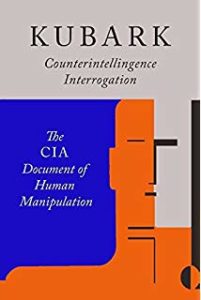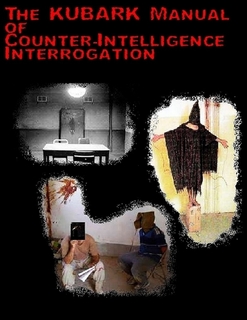CIA, KUBARK Counterintelligence Interrogation Manual
ANGLO AMERICA, 24 Sep 2018
Whale | Internet Archive – TRANSCEND Media Service
|
TABLE OF CONTENTS:
I. INTRODUCTION 1-3
A. Explanation of Purpose 1-2
B. Explanation of Organization 3
III. LEGAL AND POLICY CONSIDERATIONS 6-9
IV. THE INTERROGATOR 10-14
V. THE INTERROGATEE 15-29
A. Types of Sources: Intelligence Categories 15-19
B. Types of Sources: Personality Categories 19-28
C. Other Clues 28-29
VI. SCREENING AND OTHER PRELIMINARIES 30-37
A. Screening 30-33
B. Other Preliminary Procedures 33-37
C. Summary 37
VII. PLANNING THE COUNTERINTELLIGENCE INTERROGATION 38-51
A. The Nature of Counterintelligence Interrogation 38-42
B. The Interrogation Plan 42-44
C. The Specifics 44-51
VIII. THE NON-COERCIVE COUNTERINTELLIGENCE INTERROGATION 52-81
A. General Remarks 52-53
B. The Structure of the Interrogation 53-65
1. The Opening 53-59
2. The Reconnaissance 59-60
3. The Detailed Questioning 60-64
4. The Conclusion 64-65
C. Techniques of Non-Coercive Interrogation of Resistant Sources 65-81
IX. THE COERCIVE COUNTERINTELLIGENCE
INTERROGATION OF RESISTANT SOURCES 82-104
A. Restrictions 82
B. The Theory of Coercion 82-85
C. Arrest 85-86
D. Detention 86-87
E. Deprivation of Sensory Stimuli 87-90
F. Threats and Fear 90-92
G. Debility 92-93
H. Pain 93-95
I. Heightened Suggestibility and Hypnosis 95-98
J. Narcosis 98-100
K. The Detection of Malingering 101-102
L. Conclusion 103-104
X. INTERROGATOR’S CHECK LIST 105-109
XI. DESCRIPTIVE BILIOGRAPHY 110-122
******
[back] CIA Assassin’s Manuals
[back] CIA
[back] Torture
_______________________________________
Submitted by TRANSCEND member Satoshi Ashikaga.
DISCLAIMER: The statements, views and opinions expressed in pieces republished here are solely those of the authors and do not necessarily represent those of TMS. In accordance with title 17 U.S.C. section 107, this material is distributed without profit to those who have expressed a prior interest in receiving the included information for research and educational purposes. TMS has no affiliation whatsoever with the originator of this article nor is TMS endorsed or sponsored by the originator. “GO TO ORIGINAL” links are provided as a convenience to our readers and allow for verification of authenticity. However, as originating pages are often updated by their originating host sites, the versions posted may not match the versions our readers view when clicking the “GO TO ORIGINAL” links. This site contains copyrighted material the use of which has not always been specifically authorized by the copyright owner. We are making such material available in our efforts to advance understanding of environmental, political, human rights, economic, democracy, scientific, and social justice issues, etc. We believe this constitutes a ‘fair use’ of any such copyrighted material as provided for in section 107 of the US Copyright Law. In accordance with Title 17 U.S.C. Section 107, the material on this site is distributed without profit to those who have expressed a prior interest in receiving the included information for research and educational purposes. For more information go to: http://www.law.cornell.edu/uscode/17/107.shtml. If you wish to use copyrighted material from this site for purposes of your own that go beyond ‘fair use’, you must obtain permission from the copyright owner.

